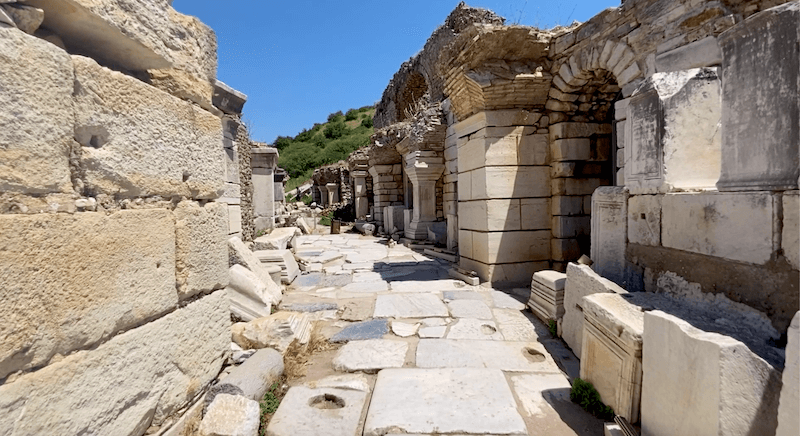Few places in the ancient world can match the spell of Ephesus. Once a glittering metropolis of marble streets, grand theatres, and monumental temples, the city was famed across the ancient Mediterranean as a hub of trade, culture, and religious devotion. Walking through its ruins today is like stepping into a living time capsule: you’ll tread the same paving stones as Roman senators, early Christians, and pilgrims drawn to the great Temple of Artemis, one of the Seven Wonders of the Ancient World.
Whether you come for its Biblical connections, its role as a crossroads of empires, or simply the thrill of exploring one of antiquity’s best-preserved cities, Ephesus never fails to leave an impression. We think it's a must-visit on any trip to Turkey, and that's why we created our expert-led Ephesus in a Day tour. To help whet your appetite before you travel, read on to discover the top things you need to see in Ephesus!
A Short History of Ephesus
The story of Ephesus stretches back more than 3,000 years. Founded by Ionian Greeks on the coast of Asia Minor, the city flourished thanks to its strategic harbor and fertile hinterland. By the 6th century BC, it was already celebrated for its colossal Temple of Artemis, a dazzling sanctuary that drew worshippers from across the Mediterranean.
Under Alexander the Great and later the Romans, Ephesus grew into one of the rehion's great urban centers. Its population may have reached a quarter of a million, making it the second-largest city in the empire after Rome. Wealth from trade poured into its streets, funding vast civic projects like the Library of Celsus and the Great Theatre, capable of seating 25,000.
But Ephesus was more than just marble grandeur: it was also a place of ideas and faith. The Apostle Paul preached here, and the Virgin Mary is said to have lived nearby in her final years, cementing the city’s role as a cornerstone of early Christianity.
In time, the harbor silted up, cutting Ephesus off from the sea that had once sustained it. Earthquakes and invasions hastened its decline, and by the Middle Ages it had all but disappeared into obscurity. Today, however, the ruins of Ephesus stand as one of the most extraordinary archaeological sites in the world - a haunting reminder of a city that once glittered at the very center of the ancient world.
MORE FOR YOU: A DAY IN EPHESUS
Join TE founder Rob as he discovers the best of Ephesus in a day!
What to See in and Around Ephesus
The House of the Virgin Mary
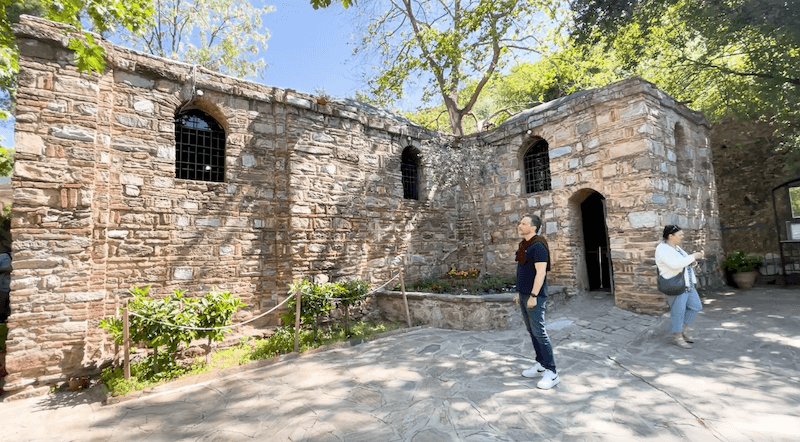
High on the wooded slopes of Mount Koressos, a modest stone chapel marks one of the most cherished pilgrimage sites in Turkey. Located in a peaceful olive grove, tradition holds that the House of the Virgin Mary was where she lived out her final years, brought here under the care of the Apostle John. The building itself dates to the Byzantine period, but the site was only rediscovered in the 19th century when the visions of a German nun led to archaeological investigation. Pilgrims continue to flock here to drink from its spring, believed to have healing powers, and to leave prayers tucked into the wall.
State Agora
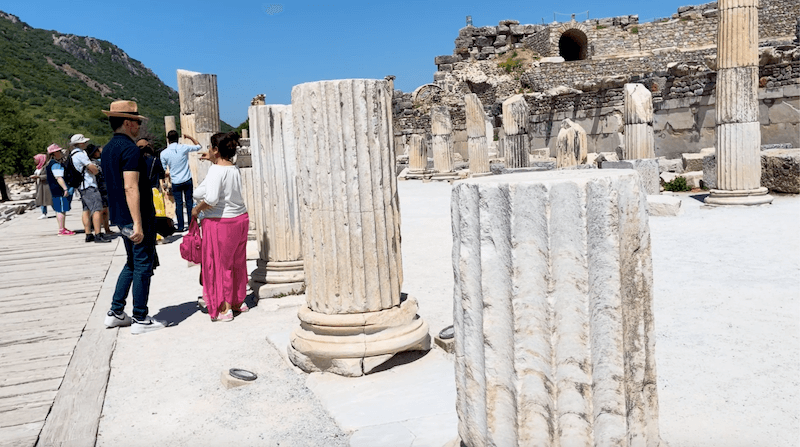
The State Agora was the civic heart of Greek and Roman Ephesus. This vast open square -160 by 73 meters in size, once bounded on three sides by colonnades, was the place where politics, law, and ceremony converged. Here citizens debated issues of trade, security, and governance under the open sky. It was also used for festivals and public announcements, making it a true stage for civic life in Ephesus. Walking its marble paving today, you can still sense the grandeur of a city that once set the pace for the entire province of Asia.
The Odeon
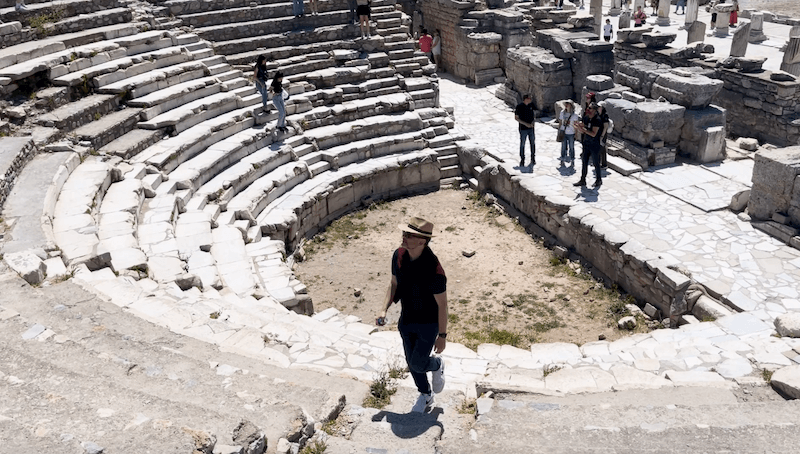
The Odeon looks like a small theater, but in fact it was much more. Built in the 2nd century AD, it seated around 1,500 people and doubled as both a concert hall and the council chamber of Ephesus. By day, the city’s senate gathered here to deliberate on taxes, laws, and infrastructure. By night, the Odeon hosted poetry recitals and music. Its horseshoe seating and covered roof gave it an intimacy missing from the grand public theaters of the ancient world. In its compact arena, politics and culture went hand in hand.
Prytaneion
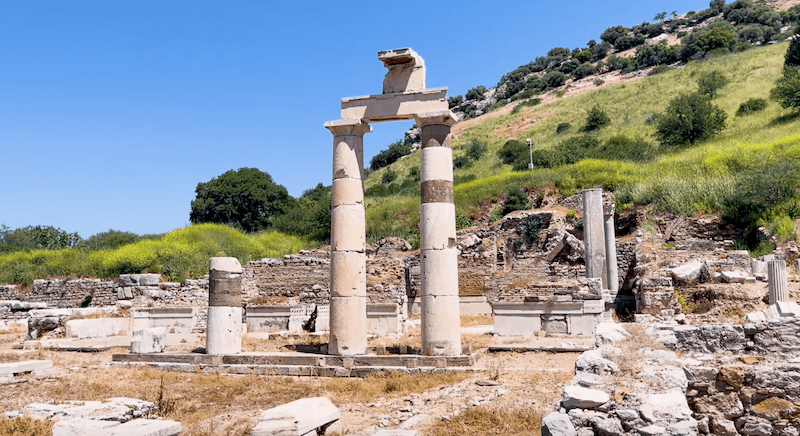
Beside the Odeon stands the Prytaneion, one of the most sacred buildings of Ephesus. This was where the city’s eternal flame burned, a fire symbolizing the life of the city itself (much like the flame in the Temple of Vesta in Rome’s ancient Forum). The flame was tended by priestesses of Hestia, and as long as it burned, Ephesus endured. The Prytaneion also played host to civic banquets honored visiting dignitaries. Archaeologists have uncovered statues of Artemis here, a reminder that religion and civic power were deeply intertwined in antiquity. It was, in essence, the hearth of the city: spiritual and political life under one roof.
Curetes Street
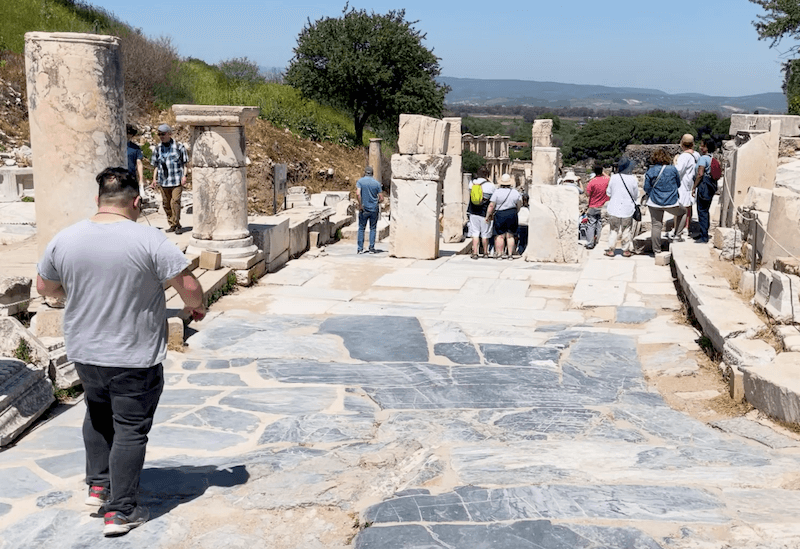
Paved in marble and lined with colonnades, Curetes Street was Ephesus’ great boulevard. The once tree-lined street linked the upper city with the Library of Celsus and was flanked by shops, temples, and fountains. Inscriptions and reliefs tell us that religious processions honoring Artemis once passed along this route, and its name recalls the Curetes, priests of the goddess who re-enacted her birth in ritual ceremonies. Even in ruin, the street retains its glamour - sections of mosaic sidewalks still gleam, and the outlines of bathhouses and stores testify to its role as a bustling thoroughfare.
Look out for straight grooves etched into the marble flagstones, designed to stop pedestrians from slipping. The blocks also feature little Greek initials, which indicate the name of the craftsman responsible for each section - helping to ensure they got paid for their labor.
Temple of Hadrian
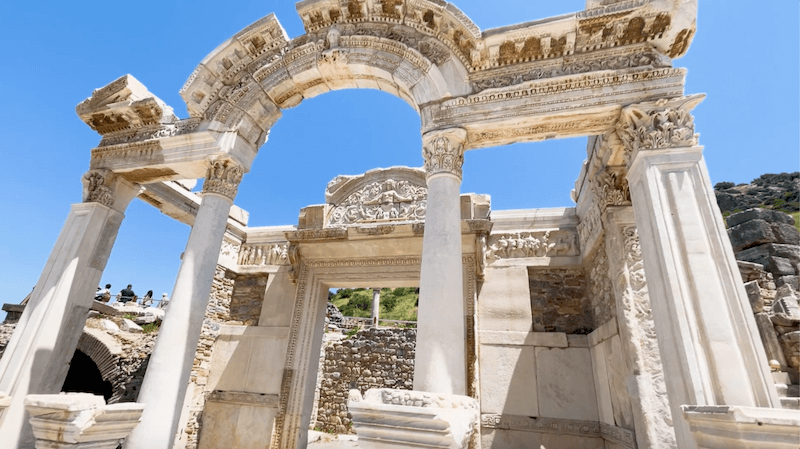
Midway down Curetes Street, the elegant façade of the Temple of Hadrian is one of Ephesus’s highlights. Built around AD 130, it honored the emperor Hadrian, whose keen eye for architecture helped craft the Pantheon and Castel Sant’Angelo in Rome as well as the extraordinary Hadrian’s Villa in Tivoli. The temple’s arched entrance is decorated with finely carved reliefs, including mythological scenes of Androklos, the city’s legendary founder.
Statues of gods and emperors once adorned its niches, reminding passersby of Rome’s might (sadly, the copper statues of the emperors have been lost to time). A superb depiction of Medusa stands guard over the door. Though the cella has not survived, the façade remains a masterpiece of Roman artistry, and a graceful monument bridging civic devotion with imperial propaganda.
Terrace Houses
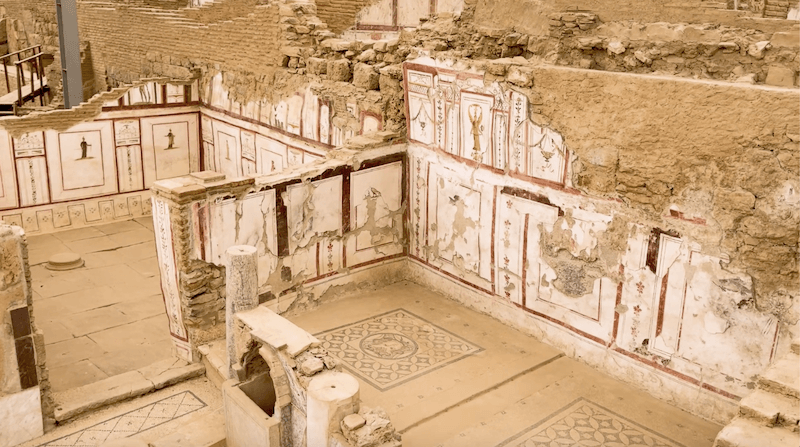
Above Curetes Street are the Terrace Houses, where Ephesus’s wealthiest citizens once lived. Built in tiers into the hillside, these villas offer an extraordinary glimpse of domestic luxury in antiquity. Inside, archaeologists have uncovered frescoed walls, intricate mosaic floors, private baths, and even systems for running water and heated floors - luxuries unmatched in much of the empire. The scale and decoration rival the much more famous site of Pompeii in southern Italy. Wandering through these rooms, you can imagine merchants entertaining over wine or families gathering beneath painted ceilings. Few ancient sites bring the personal lives of the elite into such sharp focus.
Library of Celsus
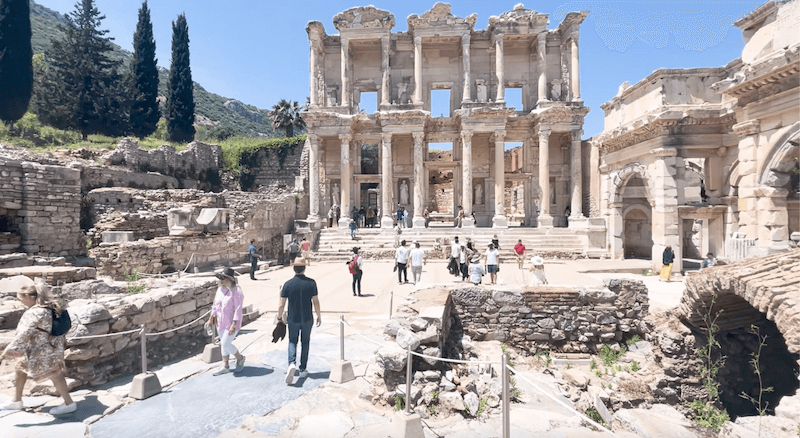
At the foot of Curetes Street rises the spectacular Library of Celsus, one of the most iconic ruins in the Mediterranean. Built in the early 2nd century AD, it was dedicated by Gaius Julius Aquila to honor his father, the Roman governor Celsus. The library once held over 12,000 scrolls in niches around its chamber, making it one of the largest in the ancient world. Its façade is a theatrical masterpiece: a two-story arrangement of columns, statues, and windows that catch and reflect the Aegean light. The statues personify Wisdom, Knowledge, Intelligence, and Valor - fitting guardians of a temple to learning. Today it is remains the defining symbol of Ephesus.
Gate of Mazaeus and Mithridates
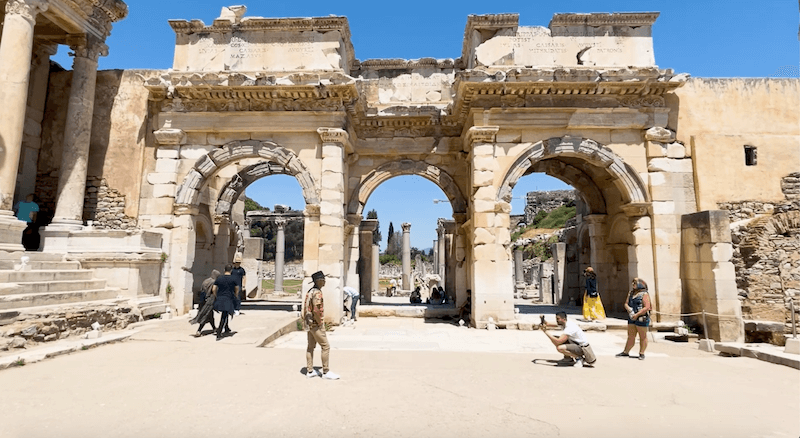
Next to the library stands the Gate of Mazaeus and Mithridates, a triple-arched monument built in 40 AD. It was commissioned by two freedmen, Mazaeus and Mithridates, to honor Augustus and his family. The gate symbolized their gratitude to the emperor for being freed, and also marked their dramatic social ascent. Inscriptions in Latin and Greek once proclaimed imperial glory to all who entered. Passing under its arches today, you retrace the footsteps of traders and pilgrims streaming into the Commercial Agora beyond.
Commercial Agora
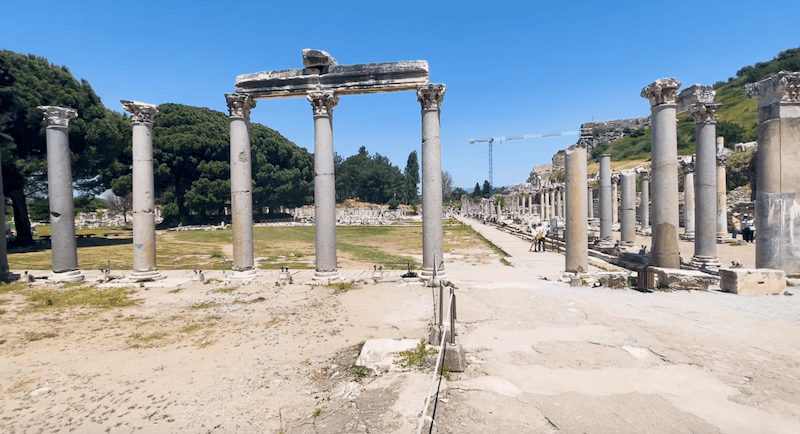
Behind the gate lies the Commercial Agora, a massive marketplace that was the economic powerhouse of Ephesus. Laid out in a perfect square, surrounded by stoas and shops, it buzzed with merchants selling goods from across the empire - Egyptian grain, Arabian spices, Asian silks, Aegean wines and, more darkly, slaves. Excavations have revealed storerooms, workshops, and even a public latrine. The agora was a cosmopolitan hub, where the wealth of empire was tangible in the smells, sights, and sounds of trade. At the center of the agora stood a sun dial and water clock, helping to keep time during court proceedings that took place here.
Great Theatre
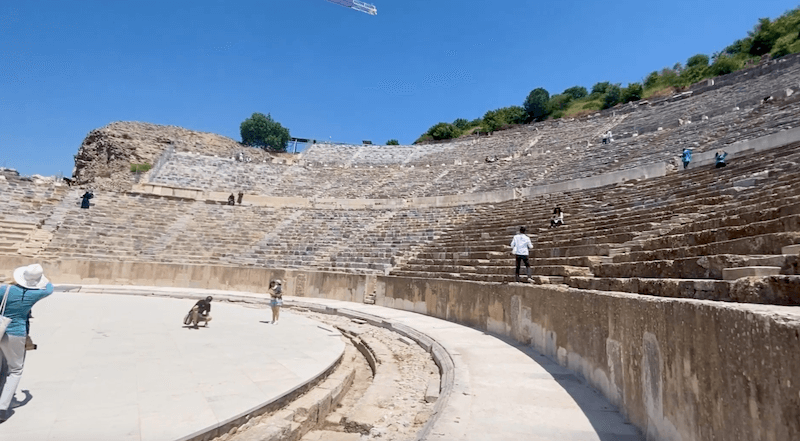
The Great Theatre is the most imposing structure in Ephesus, capable of seating 25,000 spectators. Built into the slope of Mount Pion, it was used for gladiatorial games, dramas, concerts, and assemblies. The acoustics remain so fine that even a whisper on stage can carry to the back rows. The theater also has a dramatic biblical connection: it was here that St. Paul preached so effectively that he provoked a riot among the silversmiths who profited from selling shrines of Artemis.
Temple of Artemis
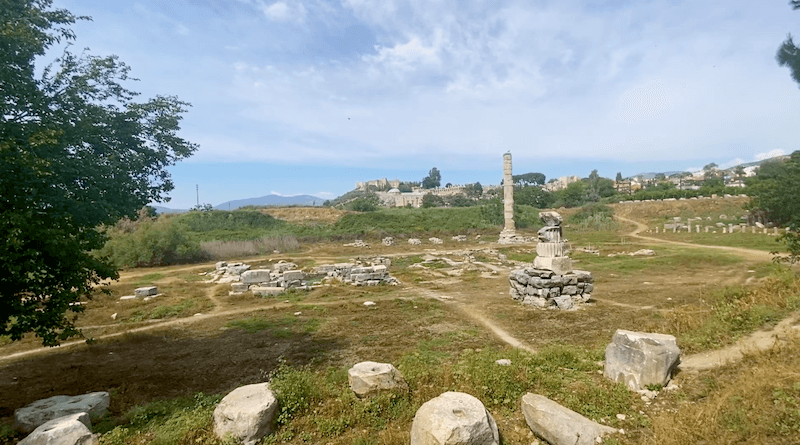
Outside the city walls lies the site of the Temple of Artemis, once one of the Seven Wonders of the Ancient World. Ancient writers described a dazzling structure of white marble, 120 columns soaring above worshippers who came from across the Mediterranean. Built and rebuilt several times, it symbolized Ephesus’s wealth and devotion to its patron goddess. Today only a single reconstructed column rises from the marshy ground, crowned by a stork’s nest - a haunting contrast to its former glory. Even in ruin, it remains a pilgrimage point for those tracing the wonders of antiquity.
Basilica of St. John
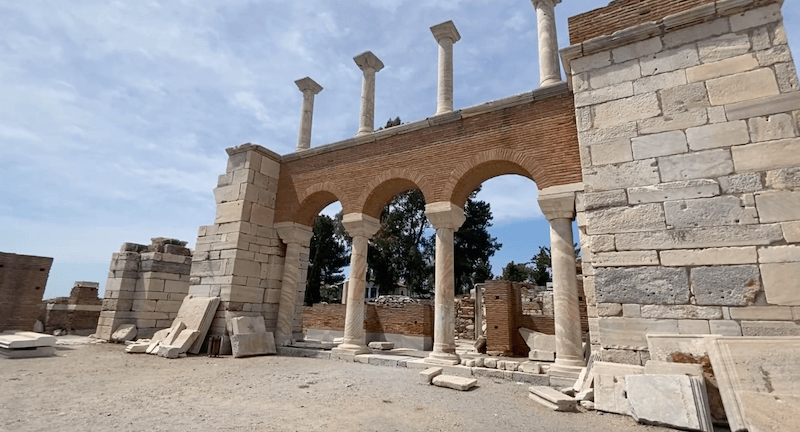
On the hill of Ayasuluk overlooking Ephesus, the Basilica of St. John preserves the memory of one of Christianity’s greatest figures. Built in the 6th century by Emperor Justinian, the church was modeled on Constantinople’s great basilicas and shaped as a vast cross crowned by domes. Beneath its marble floor lies the simple tomb of the Apostle John, who according to tradition spent his final years in Ephesus and composed his Gospel here.
Pilgrims have venerated this spot for centuries, and although much of the basilica now lies in ruin, its scale is still breathtaking. Walking among its broken columns and mosaic fragments, you get a sense of the grandeur of early Byzantine architecture and the continuity of Ephesus’s sacred importance from pagan times into the Christian era.
Isa Bey Mosque
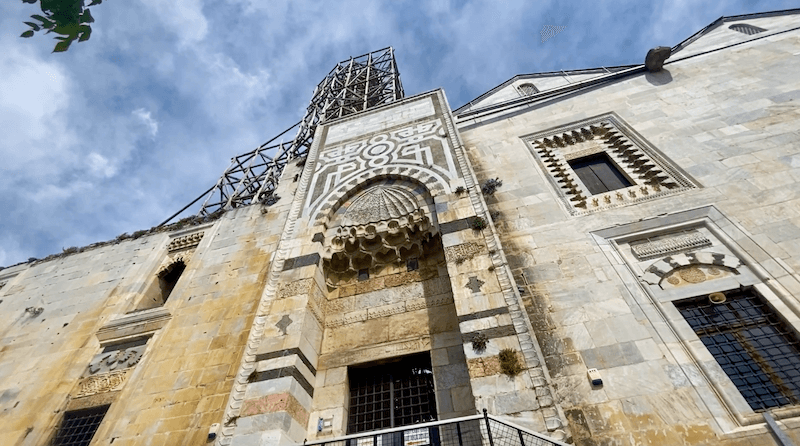
Just downhill from St. John’s Basilica stands the Isa Bey Mosque, one of the oldest and finest surviving mosques in Anatolia. Built in 1375, it reflects the artistry of the Seljuk Turks, with a graceful plan centered on two great domes and a courtyard ringed with arcades. Ancient columns recycled from earlier buildings support its structure, a reminder of the long layering of civilizations at Ephesus. Inside, light filters through intricate windows to create a serene space that blends Byzantine and Islamic traditions. The mosque is still in use today, a living testament to the city’s diverse and enduring spiritual heritage.
Cave of the seven sleepers
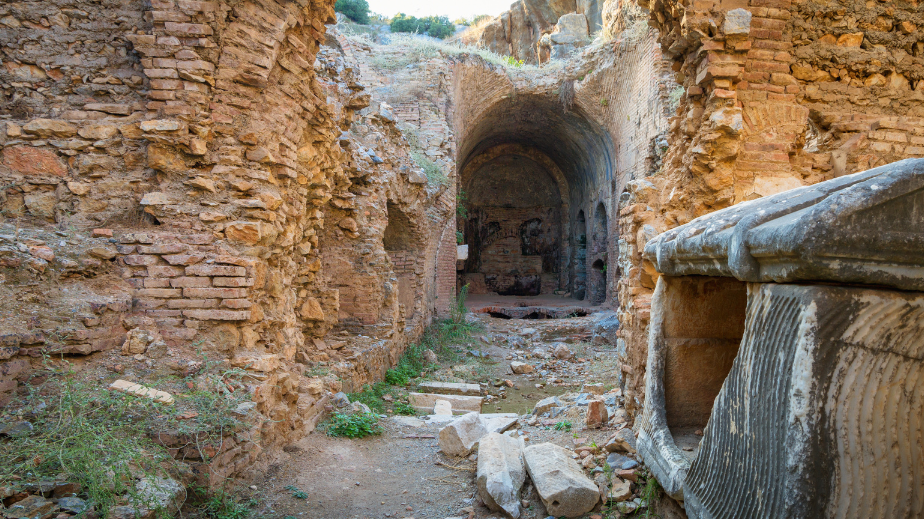
Legend has it that in 251, during the Christian persecutions under the reign of the Decius, a group of young men, refusing to turn their backs on their Christian beliefs and make sacrifices as the emperor wished, took refuge in a cave outside of Ephesus. Realizing that they were not going to change their ways the Romans had the cave door sealed. The cave was not opened until the 5th century by chance and to the surprise of those opening it the sleepers who were still inside inside awoke! In fact they were shocked upon exiting and making their way back to the city quietly for food, seeing many buildings with crosses. Others in the city were surprised to see someone trying to use such ancient coins.
The story of the sleepers is told not only in Christian references from the middle ages but also in the Quran. The numbers of the sleepers vary legend to legend, and in Islam the number of the sleepers is said to be known by Allah alone. The cave today is the site of a ruined church and below it contains many tombs, most dating from the 5th and 6th centuries.
We hope you’ve enjoyed our guide to the wonders of Ephesus. If you’re ready to experience the ancient city for yourself, join our Ephesus in a Day Tour. With an expert guide by your side, the ruins spring vividly to life — from marble avenues and grand theatres to hidden corners you might otherwise miss. Step into history and see Ephesus the way it was meant to be seen.


